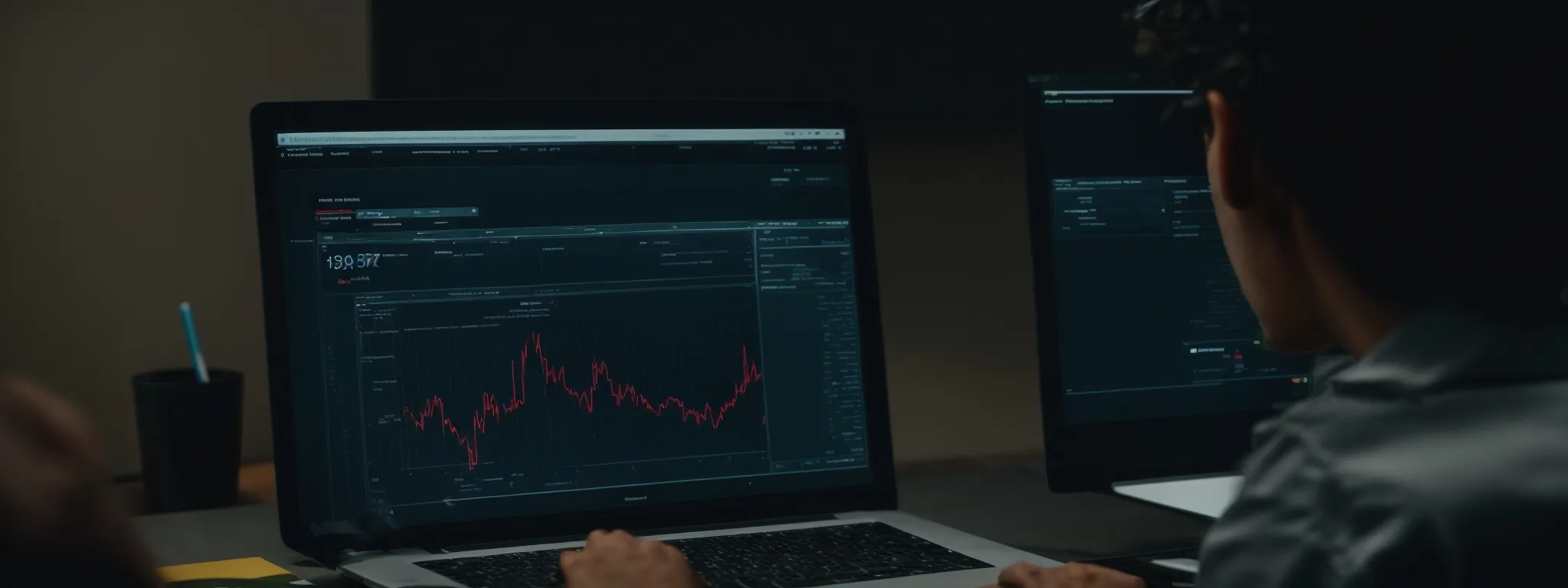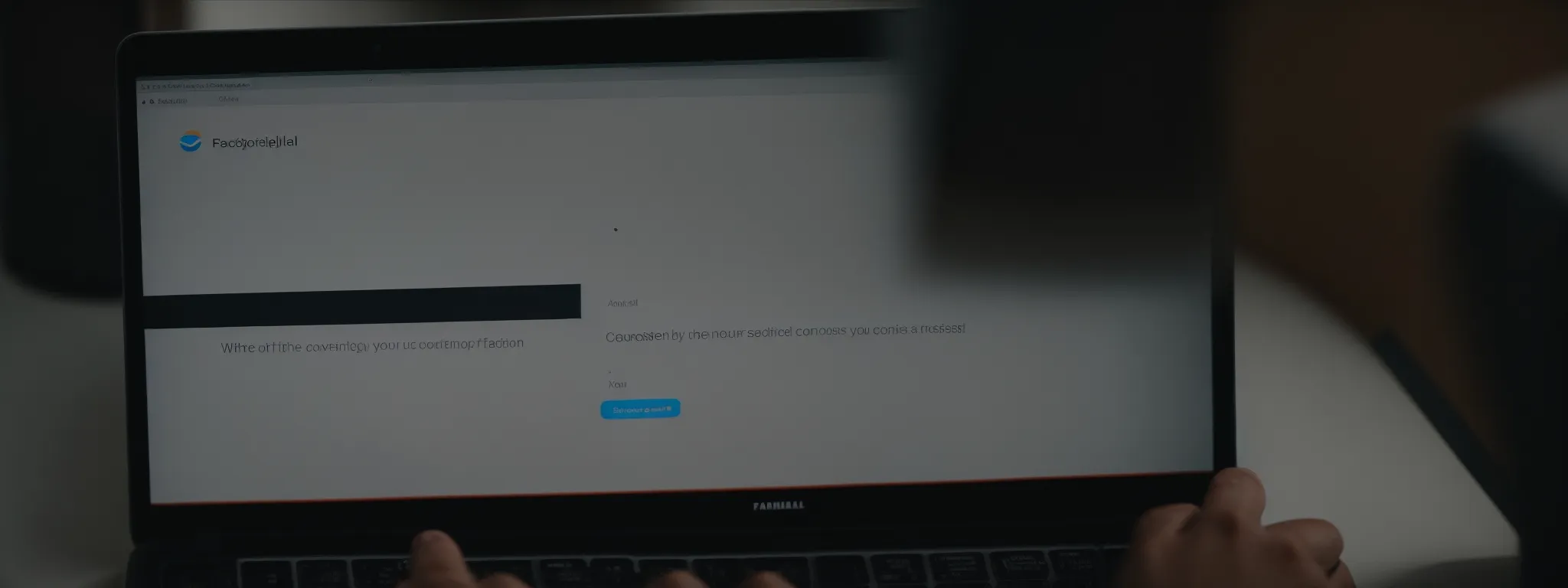New Updates to Google Page Experience Scoring Revealed at SEODay
SEODay Conference Unveils Latest Google Page Experience Scoring Updates At the recent SEODay Conference, a palpable buzz surrounded the unveiling of the latest Google Page Experience updates, […]
SEODay Conference Unveils Latest Google Page Experience Scoring Updates
At the recent SEODay Conference, a palpable buzz surrounded the unveiling of the latest Google Page Experience updates, sending a clear signal to digital marketers and SEOs alike: user experience is paramount.
Navigating through this intricate web of new metrics and guidelines is no small feat, and understanding them is pivotal for any business striving for digital prominence.
Mastery over Core Web Vitals, safe browsing practices, HTTPS security, and delicate handling of intrusive interstitials now takes center stage in the high-stakes arena where search rankings are won or lost.
As users’ expectations evolve and Google fine-tunes its algorithms, staying informed is not merely advisable—it’s indispensable for online success.
Keep reading to unlock valuable insights that will equip you for this ever-changing SEO landscape.
Key Takeaways
- Google’s Updated Page Experience Signals Highlight the Importance of Mobile-Friendliness, Site Speed, and Safe Browsing
- LinkGraph’s on-Page SEO Services and SearchAtlas Software Assist Businesses in Optimizing for Google’s Core Web Vitals
- Implementing HTTPS Is Essential for Compliance With Google’s Security Standards and Can Impact Search Rankings
- The Balance of Interstitial Usage With Google’s Guidelines Can Positively Influence User Experience and Page Scores
- Continuous Adaptation to Algorithmic Changes Is Crucial for Maintaining a Competitive Edge in SEO
Understanding the New Google Page Experience Signals

In the ever-evolving landscape of SEO, the recent SEODay Conference shed light on the pivotal updates to Google’s page experience signals.
Industry professionals keen on augmenting their site’s visibility must grasp the core elements of these updated signals, unpacking their nuances and direct impact on rankings.
With user experience elevating its role in page experience scoring, experts emphasize the necessity of optimizing for mobile use, recognizing it as a cornerstone of the revamped algorithm.
This introduction paves the way for a deeper look into the critical components that shape the digital user’s journey and therefore, the success of a website in the search engine’s eyes.
Exploring the Core Elements of the Updated Signals
At the center of the updated Google page experience signals lie several critical factors: site speed, mobile-friendliness, and safe browsing. These components serve as the bedrock of the search engine’s refined criteria, setting a benchmark for webmasters to achieve optimal user engagement and satisfaction.
With an increased focus on interactivity and visual stability, experts at LinkGraph highlight the necessity for websites to undergo a meticulous analysis of Cumulative Layout Shift (CLS) and First Input Delay (FID):
- Cumulative Layout Shift evaluates how often users experience unexpected layout changes during a page visit.
- First Input Delay measures the time from a user’s first interaction with a page to the time when the browser is able to respond to that interaction.
How User Experience Affects Page Experience Scoring
The intricacies of user experience optimization now significantly influence the scoring metrics used by Google to evaluate page experience. This dynamic reflects a profound shift in the algorithms, valorizing elements that bolster user satisfaction and retention, such as page responsiveness and accessible, intuitive navigation. Site owners leveraging LinkGraph’s on-page SEO services find themselves at a distinct advantage, as they expertly fine-tune web pages to align with these exacting standards.
Indeed, it is the seamless user journey, assessed through metrics like mobile compatibility and page loading speed, that translates into higher page experience scores. LinkGraph’s granular approach to SEO strategy ensures that every facet of the user’s digital encounter is optimized – a move that not only pleases visitors but also aligns with the search engine’s mandate for a quality-centric web ecosystem.
The Importance of Mobile-Friendliness in the Algorithm
In light of Google’s algorithm updates, the significance of mobile-friendliness has ascended to new heights, becoming a quintessential metric for gauging page experience. LinkGraph’s local SEO services underscore this trend, enabling businesses to refine their websites for enhanced mobile user engagement and, by extension, better standing in search results.
Embracing mobile optimization is no longer optional; it’s imperative for digital relevance and competitive edge. Companies that turn to LinkGraph for their SEO solutions benefit from a strategic emphasis on mobile compatibility, ensuring that every user enjoys a superior and seamless browsing experience, irrespective of their device.
Dive Into Core Web Vitals and Their Impact

In the latest SEODay Conference, the industry’s spotlight turned to the crucial updates affecting Google’s page experience scoring, specifically concerning the Core Web Vitals.
With these vital benchmarks now playing a pivotal role in site assessment, understanding the precise workings of Largest Contentful Paint (LCP), First Input Delay (FID), and Cumulative Layout Shift (CLS) is indispensable.
These metrics, integral to a website’s performance in search rankings, require a meticulous approach to foster improved scores and, ultimately, a flawless user experience.
As companies like LinkGraph tailor their SEO services to accommodate these changes, webmasters receive concrete guidance on enhancing each critical metric for a substantial boost in their digital presence.
Clarity on Largest Contentful Paint (LCP) Changes
In response to the evolving criteria of search engine algorithms, Largest Contentful Paint (LCP) emerges as a crucial factor for measuring the quality of user experience. This metric represents the load time of the main content within a viewer’s viewport, illuminating the significance of speed in relation to how quickly users can access vital information on a web page.
Updates to LCP criteria have made it clear; pages should aim for the main content to load within 2.5 seconds to ensure a positive user experience. The direct correlation between swift LCP times and a lower bounce rate substantiates the primacy of speed in garnering favorable page experience evaluations:
| Metric | Optimal Target | User Experience Impact |
|---|---|---|
| Largest Contentful Paint (LCP) | Within 2.5 seconds | Enhanced user engagement, lowered bounce rates |
LinkGraph, in recognizing these updates, integrates such insights into their SEO content strategy, as part of an overarching initiative to elevate web performance. Their focus on scrutinizing LCP metrics means clients can consistently deliver content that both reaches and retains their audience effectively.
Fresh Insights on First Input Delay (FID) Evaluation
A deep-dive into First Input Delay (FID) sheds light on user-centric performance indicators, integral to Google’s refined page experience scoring. The push for swifter, more responsive interactions comes as LinkGraph’s SEO experts analyze and optimize FID, enhancing the time it takes for a web page to become interactive post a user’s action.
Recognizing the critical nature of FID, LinkGraph ensures that its SEO solutions incorporate strategies aimed at minimizing delays, paving the way for an uninterrupted, engagement-driven user journey. This focused attention on Reducing Interactive Latency fortifies a site’s standing in search engine rankings and elevates the overall digital user experience.
Fine-Tuning Cumulative Layout Shift (CLS) for Better Scores
Cumulative Layout Shift (CLS), a performance metric gauging visual stability, demands critical evaluation and precise refinement to ensure web pages meet the heightened standards set forth by Google’s recent updates. LinkGraph’s specialized analytics tools within their SearchAtlas SEO software serve to meticulously assess and improve CLS, guiding clients towards a visually stable site that significantly limits unexpected layout shifts, thereby improving the user experience and boosting page scores.
Professional websites must proactively address issues that detract from fluid user experiences, and the minimization of Cumulative Layout Shift represents a vital SEO task within that scope. By optimizing for CLS, LinkGraph’s team of experts bolsters the likelihood of higher search rankings, as they pinpoint and eliminate elements that could disrupt the browsing sequence, ultimately paving the way towards more engaging and user-friendly digital destinations.
The Role of Safe Browsing in Page Experience

In the dynamic realm of search engine optimization, the imperative of secure browsing cannot be overstated, especially in light of the recent revelations from SEODay Conference regarding Google’s page experience updates.
The paramountcy of user protection underscores the growing intersection between cybersecurity and SEO, where the absence of robust safeguards can materially impact a site’s standing in search results.
Addressing this critical dimension, LinkGraph stands at the forefront, readying businesses for the stringent safe browsing standards demanded by today’s search algorithms.
This section delves into the necessity of enhancing security measures, interpreting Google’s comprehensive criteria for safe browsing, and preparing your website to meet, if not exceed, the expectations of a secure user experience.
Enhancing Security for a Safe User Experience
LinkGraph’s unwavering commitment to bolstering website security emerges as a cornerstone in the enhanced page experience scoring system. By prioritizing the implementation of Advanced Security Protocols, LinkGraph equips sites with the necessary defenses against malicious activities, fostering a trustworthy environment for users to navigate with confidence.
The alliance of LinkGraph’s SearchAtlas SEO software with rigorous security measures ensures clients not only adhere to Google’s stringent safe browsing criteria but excel in providing a protective digital sphere. This proactive approach to security forms an essential part of maintaining a website’s integrity, which in turn reinforces its position in search results.
Understanding Google’s Criteria for Secure Browsing
Amid the SEO landscape’s complexities, Google’s unyielding stance on secure browsing forms a critical part of page experience assessments. LinkGraph acknowledges these standards, embedding superior security practices into their SEO services to ensure that websites pass the search engine’s meticulous safety scrutiny.
Google’s criteria encompass various elements, including the absence of malware, harmful downloads, and deceptive content, all of which LinkGraph addresses through comprehensive security audits. Their dedication to maintaining a secure browsing environment reflects a broader commitment to enhancing SEO metrics and user trust alike.
Preparing Your Website for Strict Safe Browsing Standards
Ensuring compliance with Google’s rigorous standards for safe browsing is a multifaceted process: one that LinkGraph handle with assiduity and strategic finesse. Through their SearchAtlas SEO software, clients are furnished with cutting-edge tools necessary to thoroughly inspect and enhance their site’s security infrastructure, placing them squarely in alignment with Google’s safety benchmarks.
Proactive security configuration and continuous monitoring become pivotal when preparing websites for compliance. The team at LinkGraph meticulously integrates advanced security protocols to safeguard against potential vulnerabilities, providing a secure browsing experience that not only protects users but also establishes a robust foundation for sustained SEO success.
- Comprehensive evaluation of a site’s security posture to determine areas needing improvement.
- Integration of advanced security features, including SSL encryption and secure payment gateways.
- Ongoing security monitoring to promptly identify and resolve threats, thereby maintaining a pristine safety record.
HTTPS as a Ranking Signal in Page Experience

As progressive updates to SEO unfold, SEODay Conference brought to the fore the significance of HTTPS as a ranking signal within the Google page experience criteria.
This newfound emphasis underscores the transition toward a more secure web environment, where the adoption of HTTPS has sailed from mere suggestion to a definitive ranking signal.
From safeguarding user data to instilling trust among site visitors, HTTPS emerges as a critical component in the digital marketer’s toolkit.
Acknowledging this shift, LinkGraph’s SEODay discourse moves to equip industry professionals with actionable insights that navigate the HTTPS transition effectively, signify its vital role post-update, illuminate steps for seamless compliance, and demystify the ramifications of its absence on SEO rankings.
The Shift to HTTPS and Its Importance Post-Update
The incorporation of HTTPS as a definitive ranking factor by Google showcases the search engine’s heightened commitment to user security. Post-update, the shift to a secure hyper-text transfer protocol not only strengthens a website’s credibility but also plays an integral role in achieving superior page rankings.
LinkGraph’s proactive approach to this transition ensures its clients’ websites leverage the latest SEO strategies — including the implementation of HTTPS — to foster trust with users while simultaneously optimizing for search engine algorithms that prioritize secure, encrypted connections.
Steps to Switch to HTTPS and Ensure Compliance
Transitioning to HTTPS is a pivotal step in ensuring compliance with Google’s page experience scoring updates. LinkGraph assists clients through the intricacies of obtaining and installing SSL certificates: a fundamental element in the switch to an encrypted protocol that engenders user trust and meets search engine criteria.
Once HTTPS is implemented, it is crucial that webmasters conduct thorough checks to uncover and rectify any mixed content issues, guaranteeing that all resources on the site are securely served. LinkGraph’s comprehensive SEO audits provide an essential service, meticulously identifying and addressing these concerns to maintain the integrity and security of a client’s digital presence.
- Purchase and installation of SSL certificates to initiate the shift to HTTPS.
- Verification of the successful HTTPS implementation across all web pages.
- Detailed scans for mixed content and subsequent corrections to ensure consistent secure delivery.
The Consequence of Not Adopting HTTPS on Rankings
Withholding the transition to HTTPS can have dire repercussions on a website’s search rankings. Such reluctance leaves sites exposed, signaling to both Google’s algorithm and users a lack of commitment to secure data exchange, which invariably leads to a drop in trust and an adverse effect on a site’s visibility in search results.
LinkGraph, a leader in comprehensive SEO solutions, cautions clients against the oversight of forgoing HTTPS adoption. An absence of this secure protocol diminishes the credibility and SEO performance of a website, ultimately hindering the site’s ability to compete effectively within the digital marketplace.
Intrusive Interstitial Guidelines Redefined

The SEODay Conference has recently cast a spotlight on the stringent updates to Google’s guidelines concerning intrusive interstitials, signaling a substantial shift in the framework governing their use.
This recalibration presents a challenge for marketers and webmasters to redefine the frontiers of interstitial deployment without compromising the page experience for users.
The ensuing discourse contemplates the delicate equilibrium that must be sustained between aggressive marketing tactics and a user-first webpage environment.
Industry professionals are now tasked with navigating these complexities through best practices that achieve compliance while still allowing for strategic promotional activities.
As such, this subsection delves into the nuances of aligning interstitial use with the new standards, ensuring marketing efforts are both effective and aligned with Google’s enhanced user-centric focus.
New Boundaries for Acceptable Interstitial Usage
In response to Google’s heightened sensitivity to user experience, the parameters for interstitial usage have seen a rigorous recalibration. LinkGraph harnesses its expertise in digital marketing to help align businesses with these new guidelines, ensuring that interstitial advertisements do not encroach upon a user’s seamless navigation nor detract from the essence of the content sought.
The revised criteria set forth by Google, targeting unobtrusive interstitial usage, have necessitated webmasters to rethink their approach towards on-site promotions. With LinkGraph’s guidance, companies can now design their marketing strategies to incorporate interstitials in a way that complements the user experience instead of undermining it, thereby contributing positively to both the visitor’s journey and the websites’ page experience scores.
The Balance Between Marketing and Page Experience
In recognition of the delicate interplay between assertive marketing efforts and the provision of an optimal page experience, LinkGraph’s bespoke SEO services assist companies in striking a careful balance. By optimizing the timing, design, and positioning of interstitials, the user’s ability to access and enjoy content remains paramount while marketing objectives are tactfully met.
The equilibrium sought by LinkGraph entails a harmonious integration of promotional strategies that uphold the standards set by Google’s updates: an approach that positions brands to capitalize on user engagement without sacrificing page experience. The caliber of a company’s SEO practices is evident in its adeptness at navigating these requirements, preserving the integrity of the user interface while driving conversions:
- Strategic timing of interstitial display to minimize user disruption.
- Design modifications that ensure easy interstitial dismissal.
- Tailored positioning to complement the user’s journey, not hinder it.
Best Practices for Implementing Compliant Interstitials
Adhering to Google’s updated interstitial guidelines necessitates a careful blueprint that prioritizes user convenience. LinkGraph advises that the thrust of interstitial implementation should resonate with non-intrusive delivery, enabling content access with minimal user frustration.
| Aspect | Practice | Benefit |
|---|---|---|
| User Convenience | Non-intrusive Interstitials | Minimal disruption, Enhanced user satisfaction |
| Strategic Implementation | Timing and Positioning Consideration | Alignment with User Activity for a Cohesive Experience |
| Technical Compliance | Adherence to Google’s Interstitial Guidelines | Improved Page Experience Scores and Conformity |
By integrating strategic timing and positioning, LinkGraph furnishes interstitial techniques that coalesce with ongoing user activity. This consideration ensures marketing endeavors are not only compliant but enriching to the overall page experience, thus fortifying both the brand’s message and user engagement.
Tools and Tips to Optimize for Latest Page Experience Update

As the dust settles on the revelations from the recent SEODay Conference, the focus shifts to equipping site owners with the tools and acumen necessary to successfully navigate the updated page experience scoring metrics laid out by Google.
The integration of Google’s essential tools, coupled with the prioritization of impactful optimization tasks, stands as the foundation for not only meeting but exceeding the stringent criteria set forth by the search engine giant.
In preparation for a future that is invariably interwoven with ongoing algorithmic refinements, site owners are urged to remain vigilant and adaptable.
This introductory discourse lays the groundwork for the strategies and insights required to maintain a competitive edge in an environment where page experience has become a critical factor in the visibility and success of a digital presence.
Leveraging Google’s Essential Tools for Optimization
In response to Google’s latest page experience scoring updates, professionals eager to refine their websites are turning to Google’s suite of optimization tools. LinkGraph espouses the utilization of these pivotal instruments, such as Google Search Console and PageSpeed Insights, which are instrumental in achieving greater insight into web page performance and user engagement metrics.
LinkGraph’s expertise extends to guiding clients through the meticulous use of Core Web Vitals reports, available within Google’s eco-system, ensuring an intimate understanding of website responsiveness and stability. This data-driven approach empowers site owners to make informed decisions, facilitating enhancements that align with Google’s updated page experience expectations.
Prioritizing Tasks for Immediate Impact on Scoring
In light of the recent updates to Google’s page experience scoring, unveiled at the SEODay Conference, the urgency to optimize a website’s performance has never been more critical. Site owners intent on elevating their page rankings should prioritize the optimization of mobile-friendly designs and loading speeds, which are now heavyweight factors in Google’s scoring algorithm.
LinkGraph’s SEO experts advocate for a strategic focus on enhancing user-centric features such as accessibility and intuitive navigation, recognizing them as potent levers for improving the overall page experience. This concentrated effort helps businesses achieve significant uplifts in their search engine standings, translating into greater visibility and user engagement.
Staying Updated With Future Page Experience Changes
In the dynamic realm of SEO, vigilance in monitoring ongoing algorithmic updates is a requisite for maintaining an edge in search engine rankings. Thus, LinkGraph actively enriches its suite of SEO services with contemporary insights that anticipate and incorporate the latest shifts in page experience metrics.
Professionals keen on future-proofing their digital assets look to LinkGraph’s continuous advisory on the evolving landscape, where the company’s commitment to up-to-the-minute analyses and deployment of SearchAtlas SEO software equips users with the foresight and tools to adapt to forthcoming changes in page scoring practices.
Conclusion
In conclusion, the recent SEODay Conference has been a critical event for shedding light on Google’s updated page experience scoring system.
It’s evident that user experience has become more influential in Google’s algorithm, with an emphasis on site speed, mobile-friendliness, and safe browsing as key factors.
The introduction of Core Web Vitals – LCP, FID, and CLS – demands that websites prioritize quick load times, responsiveness, and visual stability to score well.
Additionally, secure browsing through HTTPS is now an essential ranking signal, and compliance with new guidelines on intrusive interstitials is necessary to maintain user engagement and meet Google’s performance criteria.
LinkGraph and similar SEO experts have highlighted the need for businesses to adapt their websites to these changes urgently, leveraging tools like Google Search Console and taking immediate action on key tasks like mobile optimization to improve rankings.
Staying abreast of these updates is crucial for site owners who wish to remain competitive in the digital landscape, ensuring their websites deliver a superior page experience and meet the evolving demands of users and search engines alike.















































































